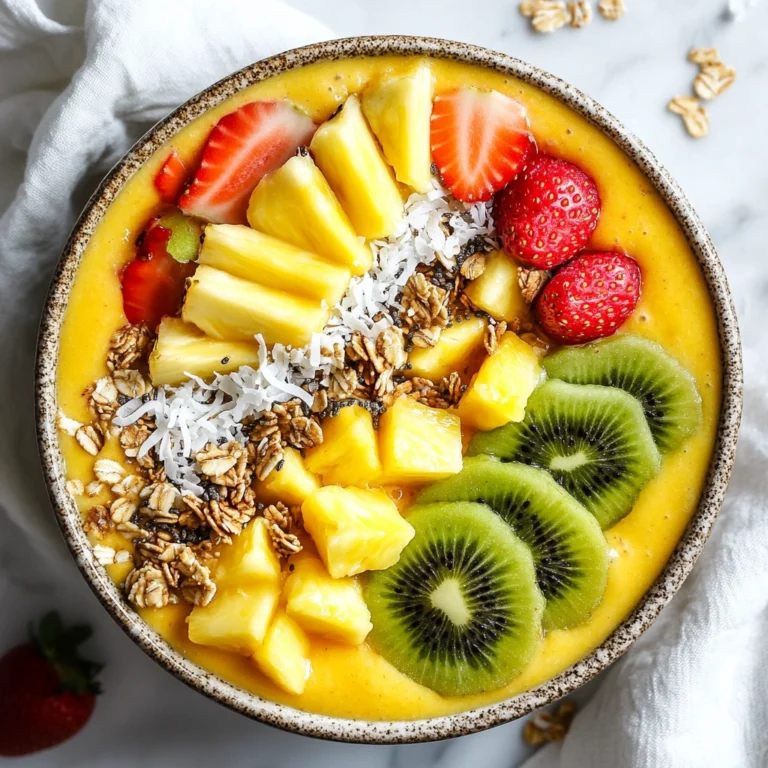Best Lemon Bundt Cake Recipe for Moist, Tangy Perfection
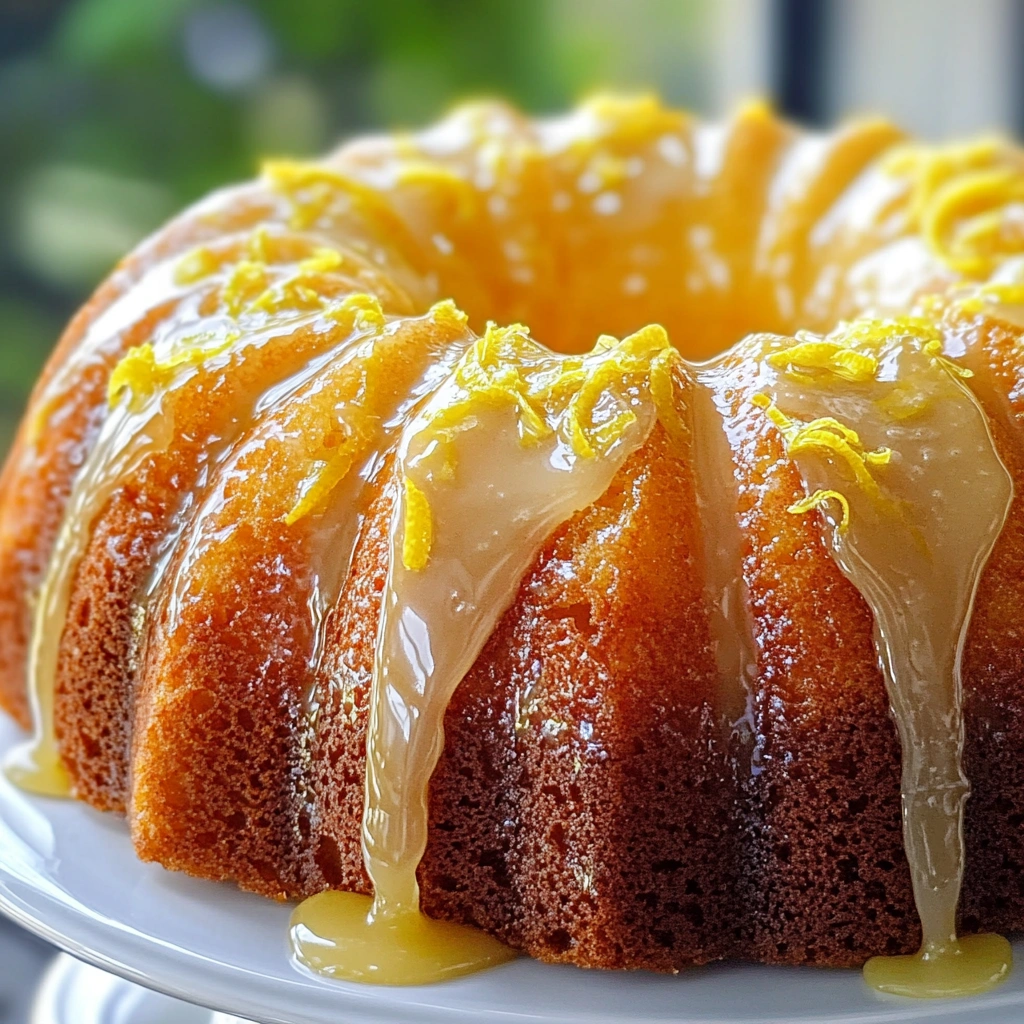
Lemon bundt cake is the kind of dessert that wins hearts at first bite. Whether it’s for a summer picnic, a baby shower, or simply a sweet tooth craving, the bright, citrusy punch of fresh lemon paired with a moist, tender crumb makes this cake a standout. This guide will walk you through everything you need—from must-have ingredients to baking secrets, glazes, storage tips, and more. We’ll also answer some popular questions like “What makes bundt cakes moist?” and “Can you use cake mix in a bundt pan?”
Don’t miss our carrot cake cookies recipe for another delicious dessert with a twist.
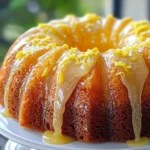
Best Lemon Bundt Cake Recipe for Moist, Tangy Perfection
- Total Time: 1 hour 10 minutes
- Yield: 12 servings 1x
Description
A clean, easy-to-follow recipe card for the lemon bundt cake recipe—perfect for printing, sharing, or saving. Includes step-by-step instructions, ingredients, pro tips, baking time, and glaze details in a simple, Tasty-style layout. Great for beginners and home bakers!
Ingredients
Dry Ingredients:
-
2½ cups all-purpose flour
-
2 teaspoons baking powder
-
½ teaspoon baking soda
-
½ teaspoon salt
Wet Ingredients:
-
1 cup unsalted butter (room temp)
-
1¾ cups granulated sugar
-
4 large eggs
-
⅓ cup fresh lemon juice
-
1 tablespoon lemon zest
-
1 cup sour cream
-
1 teaspoon vanilla extract
Lemon Glaze:
-
1 cup powdered sugar
-
2 tablespoons lemon juice
-
½ teaspoon lemon zest
-
Optional: 1 tablespoon milk for thinner glaze
Instructions
-
Prep the oven and pan:
Preheat oven to 350°F (175°C). Grease a 10–12 cup bundt pan thoroughly with butter or baking spray. -
Mix dry ingredients:
In a medium bowl, whisk together flour, baking powder, baking soda, and salt. -
Cream butter and sugar:
In a large bowl, beat butter and sugar until light and fluffy, about 3–4 minutes. -
Add eggs and flavor:
Beat in eggs one at a time. Stir in lemon juice, zest, and vanilla. -
Combine wet and dry:
Add flour mixture in 3 parts, alternating with sour cream. Mix gently until just combined. -
Pour and bake:
Spoon batter into the prepared pan and smooth the top. Bake for 45–55 minutes, or until a skewer inserted comes out clean. -
Cool and release:
Let the cake cool in the pan for 10 minutes, then invert onto a wire rack to cool completely. -
Glaze and serve:
Mix glaze ingredients until smooth. Drizzle over the cooled cake. Slice and enjoy!
- Prep Time: 20 minutes
- Cook Time: 50 minutes
Nutrition
- Serving Size: 1 slice (1/12 of cake)
- Calories: 390 kcal
- Fat: 19 g
- Carbohydrates: 50 g
- Protein: 4 g
Table of Contents
Essential Ingredients for a Moist Lemon Bundt Cake
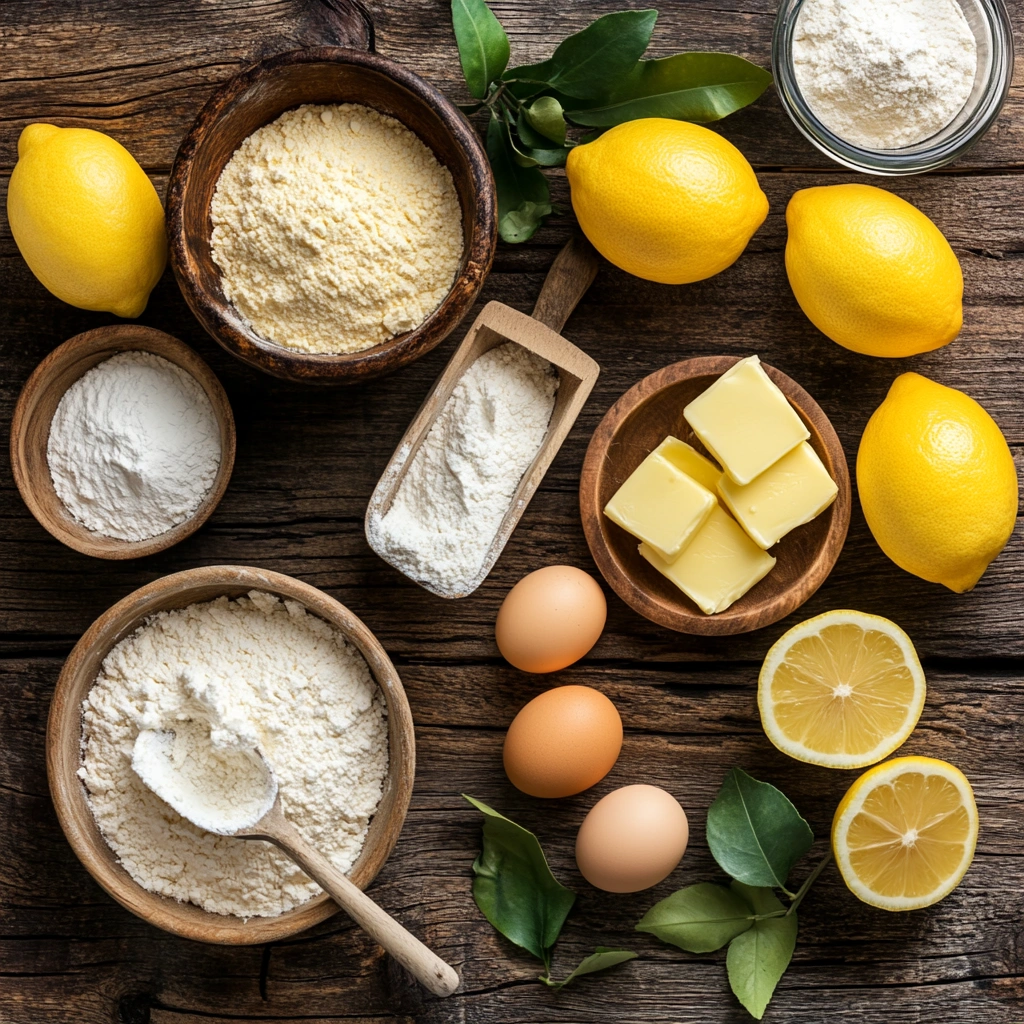
Why Fresh Lemons Are Key in Any Lemon Bundt Cake Recipe
When you’re following a lemon bundt cake recipe, one of the most important things to get right is the source of your citrus flavor. Fresh lemons offer a natural brightness that elevates the entire cake. Both the juice and zest contribute different elements—juice brings acidity and a crisp citrus tang, while zest adds depth and aroma thanks to the lemon’s natural oils.
Bottled lemon juice just doesn’t cut it. It’s often muted in flavor and sometimes even has a chemical aftertaste. If you want a lemon bundt cake recipe that truly impresses, always zest and juice your lemons right before mixing the batter. For one standard cake, the juice from two lemons and the zest of one is typically just right.
Fats and Dairy That Create Moisture in the Perfect Lemon Bundt Cake Recipe
A standout lemon bundt cake recipe isn’t just about flavor—it’s also about that rich, moist crumb. What gives the cake that soft, melt-in-your-mouth feel? It’s the combination of fat sources and dairy in the batter.
Here’s a closer look at the three key players:
- Butter provides structure and classic cake flavor. It helps the cake hold its shape and gives it a smooth richness.
- Neutral oil, such as vegetable or canola, ensures moisture stays locked in. Because oil remains liquid at room temperature, it keeps the cake tender for days.
- Sour cream or full-fat Greek yogurt adds density and moisture while enhancing the tangy citrus profile. It also thickens the batter, leading to better lift and a delicate crumb.
Here’s a quick table breaking it down:
| Ingredient | What It Does | Flavor Contribution |
|---|---|---|
| Unsalted Butter | Structure + richness | Mild dairy flavor |
| Oil | Locks in moisture | Neutral, doesn’t compete |
| Sour Cream/Greek Yogurt | Adds creaminess and tender crumb | Slight tang that boosts lemon |
Don’t miss our crockpot chicken and noodles recipe for a hearty main to enjoy before serving your cake.
By balancing these components, this lemon bundt cake recipe ensures a moist, soft interior that holds up beautifully for days—without drying out or losing flavor.
Secret Techniques for a Super Moist Lemon Bundt Cake
Smart Mixing Tips That Make or Break a Lemon Bundt Cake Recipe
If your lemon bundt cake recipe turns out dry or uneven, it may not be your ingredients—it could be your mixing method. There are two primary approaches to blending cake batter: the creaming method and the all-in-one method. Each influences the texture in its own way.
- Creaming Method: This technique starts by beating butter and sugar until light and fluffy, incorporating air into the batter. Eggs and wet ingredients follow, with dry ingredients added in stages. This method is ideal when you want your lemon bundt cake recipe to yield a soft, airy crumb with excellent rise.
- All-in-One Method: Everything goes into the bowl at once—dry, wet, and everything in between. It’s fast and simple, making it a favorite among beginners. However, it can lead to a denser cake if not handled carefully. For best results, use room-temperature ingredients and avoid overmixing.
If your goal is to bake the kind of lemon bundt cake recipe that feels like it came from a bakery, stick with the creaming method. It takes a bit longer but guarantees better texture and lift.
Why Room Temperature Ingredients Are Non-Negotiable
One overlooked factor in any lemon bundt cake recipe is ingredient temperature. Using eggs or butter straight from the fridge causes your batter to mix unevenly and can negatively affect the cake’s rise.
When all your ingredients are at room temperature, they blend more smoothly and evenly. Butter creams better with sugar, eggs emulsify the batter properly, and your final cake comes out fluffier and more consistent throughout.
If you’re pressed for time, here’s a quick kitchen trick: place cold eggs in a bowl of warm water for about 10 minutes and microwave butter for 5 seconds at a time until slightly softened.
Looking for inspiration? Try creamy pesto chicken as a savory main dish to follow up with your homemade lemon bundt cake.
Perfect technique is what turns a good lemon bundt cake recipe into a great one. With careful mixing and the right temperature settings, you’ll get a cake that’s moist, fluffy, and full of that lemony goodness in every slice.
How Lemon Juice Changes the Cake Chemistry
What Lemon Juice Does Inside the Batter of a Lemon Bundt Cake Recipe
Most people add lemon juice to their cake batter for flavor—but there’s more happening than meets the eye. In any quality lemon bundt cake recipe, lemon juice isn’t just a flavor enhancer. It actually plays a chemical role in shaping the texture and rise of your cake.
Lemon juice is highly acidic, and when combined with alkaline ingredients like baking soda or baking powder, it triggers a leavening reaction. This means it creates tiny gas bubbles that expand in the oven, helping your cake become light and airy rather than dense and flat.
This acid-base reaction not only improves structure but also extends the softness of the crumb. In fact, one reason this lemon bundt cake recipe stays so fluffy is thanks to the lemon juice reacting with other leaveners during baking.
Why Acidity Is Essential for Flavor and Texture
Besides helping the cake rise, the acidity of lemon juice plays a major role in taste and texture. It balances out the sweetness, keeping your dessert from feeling overly sugary. It also breaks down some of the proteins in the flour and dairy, which softens the crumb and enhances tenderness.
Here’s a quick breakdown of how lemon juice affects baking:
| Lemon Juice Role | Impact on Cake |
|---|---|
| Reacts with baking soda | Adds lift and airiness |
| Enhances flavor | Cuts sweetness, adds brightness |
| Tenderizes proteins | Creates softer crumb |
| Prolongs freshness | Helps keep cake moist over time |
So if you’re looking to master a lemon bundt cake recipe that checks every box—moist, light, flavorful, and fresh-tasting—don’t overlook the power of real lemon juice.
Discover great ideas like carrot cake cookies for more citrus-friendly dessert pairings.
By understanding how lemon juice works behind the scenes, you can tweak your lemon bundt cake recipe for better results every time.
Classic vs Copycat Lemon Nothing Bundt Cake Recipe
What Goes into the Famous Lemon Nothing Bundt Cake?
If you’ve ever tried the lemon-flavored cake from Nothing Bundt Cakes, you know it’s unlike any ordinary lemon bundt cake recipe. It’s extra moist, rich, and topped with their signature cream cheese frosting that adds a luxurious finish.
So what’s their secret? While the exact formula is proprietary, copycat versions often rely on a few shortcut ingredients that make a big impact:
- Boxed Lemon Cake Mix
- Instant Lemon Pudding Mix
- Sour Cream
- Vegetable Oil
- Eggs
- Lemon Zest or Juice
- Cream Cheese Frosting (sometimes piped on in petals)
These ingredients are mixed into a thick batter that bakes into a super soft, vibrant cake with intense lemon flavor and a fine, uniform crumb. The pudding mix and sour cream are key to its signature moisture and texture.
If you’re looking to replicate this style, the boxed mix makes it easy—no need to start entirely from scratch.
Comparing Homemade and Bakery-Style Lemon Bundt Cake Recipes
Let’s compare the classic homemade lemon bundt cake recipe versus the Nothing Bundt Cakes copycat approach:
| Feature | Classic Homemade Version | Copycat Nothing Bundt Cake Style |
|---|---|---|
| Base Flavor | Fresh lemon juice + zest | Boxed mix + pudding for intense lemon punch |
| Texture | Light and buttery | Ultra-moist and soft |
| Ingredients Used | Real butter, flour, sugar, dairy | Cake mix, pudding, oil, eggs |
| Effort Level | More time-consuming | Easier for beginners |
| Frosting | Optional glaze or light icing | Thick cream cheese frosting piped on top |
While both versions produce a delicious dessert, they suit different needs. If you want a fully homemade experience, a scratch lemon bundt cake recipe gives you full control over ingredients and flavor balance. But if convenience is your goal, the Nothing Bundt Cake copycat is a fantastic shortcut without sacrificing flavor.
Don’t miss our blog collection for even more sweet recipe inspiration.
Whether you go traditional or copycat, both styles offer that tangy-sweet lemon goodness that makes lemon bundt cake a favorite across kitchens and bakeries alike.
Step-by-Step Lemon Bundt Cake Recipe Guide
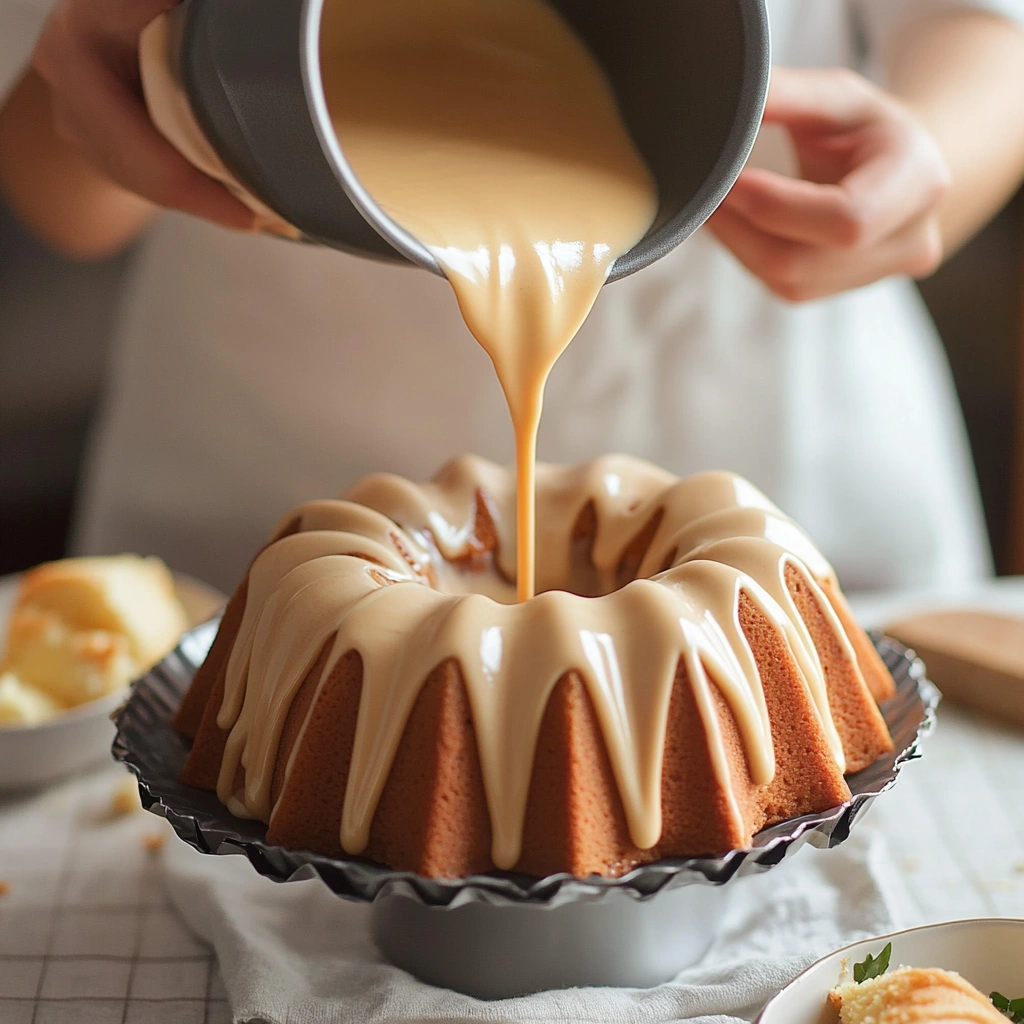
Tools and Equipment You’ll Need
To get the best results from your lemon bundt cake recipe, make sure you have the right baking tools on hand. This helps ensure a flawless process from start to finish:
- Non-stick bundt pan (10–12 cup capacity)
- Stand mixer or electric hand mixer
- Fine grater or zester
- Mixing bowls (various sizes)
- Rubber spatula
- Wire rack for cooling
- Pastry brush (optional for applying syrup or glaze)
Pro tip: Grease your pan thoroughly, including all crevices, to prevent sticking and ensure a clean release after baking.
Easy Homemade Lemon Bundt Cake Recipe (From Scratch)
This lemon bundt cake recipe is fresh, zesty, and soft with just the right balance of sweetness and citrus flavor.
Ingredients:
- 2½ cups all-purpose flour
- 2 teaspoons baking powder
- ½ teaspoon baking soda
- ½ teaspoon salt
- 1 cup unsalted butter, softened
- 1¾ cups granulated sugar
- 4 large eggs
- ⅓ cup freshly squeezed lemon juice
- 1 tablespoon lemon zest
- 1 cup sour cream (room temperature)
- 1 teaspoon vanilla extract
Lemon Glaze:
- 1 cup powdered sugar
- 2 tablespoons lemon juice
- ½ teaspoon lemon zest
How to Make It:
- Get the oven ready by preheating it to 350°F (175°C). Generously coat your bundt pan with butter or non-stick spray that contains flour.
- In a mixing bowl, combine the flour, baking powder, baking soda, and salt, and whisk to blend. Set aside.
- In another bowl, beat the softened butter and sugar together using a mixer until the texture becomes pale and fluffy—this usually takes about 3–4 minutes.
- Crack in the eggs one by one, making sure each one is fully mixed before adding the next. Then blend in the lemon juice, zest, and vanilla until everything is well combined.
- Now, gradually add the dry ingredients, alternating with the sour cream. Begin and end with the flour mixture. Stir gently until everything is incorporated—don’t overmix.
- Transfer the batter into your prepared bundt pan and spread it evenly. A few gentle taps on the counter will help eliminate trapped air pockets.
- Bake in the center of the oven for 45 to 55 minutes. You’ll know it’s done when a wooden skewer or toothpick comes out clean from the thickest part.
- Once baked, allow the cake to rest in the pan for about 10 minutes. Then carefully flip it out onto a wire rack and let it cool completely before adding the glaze.
- Prepare your glaze by stirring together powdered sugar, lemon juice, and zest. Drizzle over the fully cooled cake using a spoon or piping bag.
Don’t miss our chicken piccata meatballs recipe for a zesty main dish that pairs perfectly with this bright dessert.
Using Cake Mixes in a Bundt Pan – Does It Work?
Can You Make a Lemon Bundt Cake Recipe Using Boxed Cake Mix?
Absolutely. You don’t always need a scratch-made batter to whip up a delicious lemon bundt cake. Many home bakers turn to boxed cake mixes for convenience, and the good news is—they work beautifully in a bundt pan.
The trick is knowing how to modify your mix so the final cake has that bakery-style texture and flavor you’d expect from a fully homemade lemon bundt cake recipe. When baked in a bundt pan, the mix bakes evenly and gets a nice golden exterior while keeping the inside moist and flavorful.
However, not all mixes are created equal. Choose one labeled as “moist” or “super moist” for best results. Popular options include Duncan Hines, Betty Crocker, or Pillsbury lemon cake mixes.
Easy Upgrades to Improve Boxed Bundt Cakes
To make your boxed lemon cake taste like it came from a high-end bakery, try these simple upgrades:
| Box Mix Add-On | Why It Works |
|---|---|
| Replace water with milk or buttermilk | Adds richness and depth |
| Add sour cream (½ cup) | Makes cake ultra-moist and tender |
| Add lemon zest | Boosts fresh citrus aroma and flavor |
| Use melted butter instead of oil | Provides richer taste and better texture |
| Mix in lemon pudding | Adds density and amplifies lemon flavor |
Here’s a quick recipe booster you can follow using boxed mix:
Boxed Lemon Bundt Cake Booster Recipe:
- 1 box lemon cake mix
- 1 small box instant lemon pudding
- 4 large eggs
- ½ cup sour cream
- ½ cup milk or buttermilk
- ⅓ cup melted butter
- 1 tablespoon fresh lemon zest
Instructions:
- Preheat oven to 350°F. Grease your bundt pan.
- In a large bowl, combine all ingredients and mix until smooth.
- Pour into the bundt pan and bake for 40–50 minutes.
- Let cool in the pan for 10 minutes, then invert onto a rack.
Top with a lemon glaze or a light dusting of powdered sugar for a beautiful finish.
Looking for more simple dinner-to-dessert combos? Check out our bang bang chicken bowl that pairs well with a sweet and tangy cake like this.
Even if you’re short on time or baking from a box, with a few smart tweaks your lemon bundt cake recipe can still deliver moist, fluffy, and flavorful results your guests will rave about.
Glazes, Toppings, and Serving Ideas
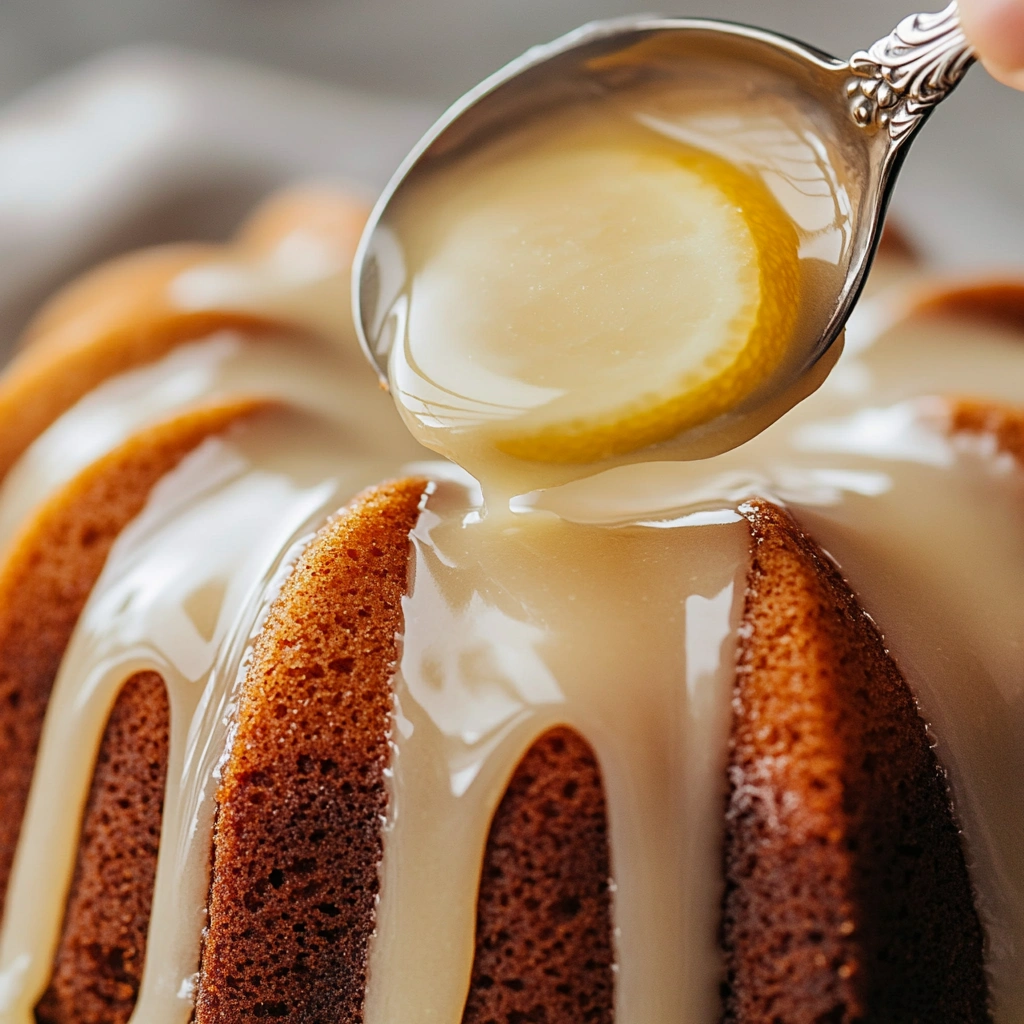
The Best Glaze for a Lemon Bundt Cake Recipe
No lemon bundt cake recipe is complete without a luscious glaze that locks in moisture and adds a burst of flavor. While you can go with something as simple as powdered sugar, a homemade lemon glaze enhances both the appearance and taste of your cake.
Here’s an easy glaze that pairs beautifully with any lemon bundt cake recipe:
Lemon Glaze Recipe:
- 1 cup powdered sugar
- 2 tablespoons fresh lemon juice
- ½ teaspoon lemon zest
- Optional: 1 tablespoon milk (for a thinner glaze)
How to apply:
Wait until the cake is fully cool. Pour the glaze slowly over the top of the bundt, allowing it to drip naturally down the sides. For a clean look, place parchment paper beneath the cooling rack to catch excess glaze.
Pro Tip: Want an extra glossy finish? Add a tiny splash of corn syrup to the glaze.
More Creative Topping Ideas to Elevate Your Cake
If you want to go beyond the traditional lemon glaze, try one of these topping ideas to dress up your lemon bundt cake recipe and impress your guests:
| Topping Type | What It Adds | When to Use It |
|---|---|---|
| Cream Cheese Icing | Richness + a bakery-style finish | Great for special occasions |
| Lemon Curd | Extra lemon punch + moisture | Spread over individual slices |
| Powdered Sugar Dusting | Elegant, quick, and classic | Perfect for brunch or tea parties |
| Edible Flowers | Colorful and eye-catching | Ideal for spring or summer tables |
| Fresh Berries | Sweet, tart contrast | Adds texture and flavor to each bite |
Don’t miss our carrot cake cookies if you’re craving another stunning dessert with natural ingredients.
How to Serve Lemon Bundt Cake for Any Occasion
Your lemon bundt cake recipe can be served in many delightful ways depending on the vibe you’re going for:
- Warm with a scoop of vanilla ice cream for a comforting treat
- Chilled with fresh berries and mint for a summery twist
- With a side of whipped cream and tea for a cozy afternoon snack
- Topped with sugared lemon slices for a gorgeous presentation at dinner parties
No matter how you serve it, your bundt cake will shine with just the right finishing touch.
Storing, Freezing, and Reheating Lemon Bundt Cake
How to Store a Lemon Bundt Cake Recipe for Maximum Freshness
Proper storage is key to making your lemon bundt cake recipe last longer while keeping it moist and flavorful. After your cake has cooled completely and glaze has set, here’s how to store it:
- At Room Temperature: If your kitchen is cool and dry, keep the cake on the counter in an airtight container or cake dome for up to 3 days.
- In the Fridge: To extend shelf life up to 5 days, refrigerate the cake in a sealed container. Note that refrigeration can dry it out slightly—bring slices to room temperature before serving for best texture.
Tip: If you used cream cheese frosting instead of a lemon glaze, always refrigerate the cake due to dairy content.
Freezing Lemon Bundt Cake Without Compromising Quality
Yes—you can freeze a lemon bundt cake, and it still tastes fantastic once thawed. Whether you’re prepping ahead for a party or saving leftovers, follow these steps to freeze your lemon bundt cake recipe correctly:
- Skip the glaze before freezing. Add it fresh after thawing for best texture.
- Wrap the entire cake tightly in plastic wrap, followed by aluminum foil to protect from freezer burn.
- Label and date it, then place it in a freezer-safe bag or airtight container.
- The cake can be stored frozen for up to 3 months.
To freeze slices, wrap each one individually using the same method. This allows you to thaw only what you need.
The Right Way to Thaw and Reheat Lemon Bundt Cake
To enjoy your lemon bundt cake recipe after freezing, transfer it to the fridge overnight or leave it on the counter for several hours until completely thawed.
For a fresh-out-of-the-oven taste:
- Microwave individual slices for 10–15 seconds on medium power.
- For larger portions, wrap in foil and warm in the oven at 300°F for 8–10 minutes.
Just be careful not to overheat—it can dry out your cake instead of reviving it.
Looking for a full comfort-food combo? Pair this dessert with our crockpot chicken and noodles for a hearty, homestyle meal.
Proper storage and reheating ensure your lemon bundt cake recipe tastes as amazing on day five as it did on day one—bright, moist, and bursting with lemon flavor.
What is the secret to moist Bundt cake?
The secret lies in using a blend of fats like butter and oil, plus moisture-retaining ingredients like sour cream or Greek yogurt. Avoid overbaking, and try brushing the cake with a simple syrup after baking for added moisture.
What happens when you add lemon juice to cake batter?
Lemon juice acts as a natural acid that reacts with baking soda to help your cake rise. It also enhances the citrus flavor and creates a tender, lighter crumb.
What are the ingredients in the lemon Nothing Bundt Cake?
Copycat versions typically include lemon cake mix, lemon pudding mix, sour cream, oil, eggs, and lemon zest. It’s usually topped with a thick cream cheese frosting piped over the top.
Can you use a regular box cake mix in a bundt pan?
Absolutely. Box cake mixes work well in bundt pans. Just make sure to grease the pan properly and bake longer than you would in a standard round or sheet pan. You can improve the result by adding sour cream, pudding mix, or fresh lemon zest.
Conclusion: Your Go-To Lemon Bundt Cake Recipe for Every Occasion
Whether you’re using fresh ingredients from scratch or a shortcut with boxed cake mix, this lemon bundt cake recipe delivers results every time. From tangy lemon flavor to a buttery, soft crumb and show-stopping glaze, it’s a dessert worth repeating. Follow the techniques, tips, and customizations in this guide to create a lemon bundt cake that’s as beautiful as it is delicious—no bakery required.



